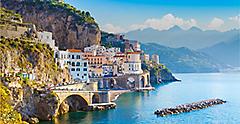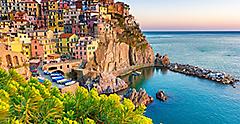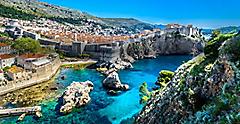
The Best Things To Do in Barcelona
Barcelona City History Museum
Since there is no better way to understand the present than to dive into the past, a great starting point is the Museu d'Història de Barcelona (MUHBA), where the walk down memory lane takes you all the way back to the first century BC! This historical gem includes excavated ruins as well as a reconstruction of Roman Barcelona, complete with a winery, a chapel, a factory for dying fish, and a warehouse where citizens laundered their clothes.
You will also discover exhibitions that bring to life Medieval Barcelona, providing context for how the city became the capital of the Empire. Located in the Plaça del Rei (King’s Plaza), where a series of Gothic buildings can be traced back to the 11th century, MUHBA immerses you in a captivating mediaeval world.
Prepare to be wowed by the Palau Reial Major, the impressive royal palace, as well as the Chapel of Santa Agata, built in 1302 by King James II of Aragon. Icons of Catalan artistry are housed in the Chapel, including the epiphany altarpiece painted by Jaime Huguet and the decorated ceiling timbers by Alfonso de Córdoba.
If your travels through centuries of history have left you feeling like you’ve entered a time continuum, the lines between past and present continue to be blurred as you delve into Barcelona’s next marvel – a construction project started more than 130 years ago!
Sagrada Familia
Barcelona’s skyline is boldly chiselled by the Sagrada Familia, Antoni Gaudi’s towering masterpiece. The largest unfinished Catholic church in the world, this jaw-dropping example of Catalan Modernism has been under construction since the first stone was laid in 1882.
Gaudi, who famously said, “Nothing is invented for it is written in nature first,” used sinuous lines and natural, organic designs in his work. The end result was a trademark style so unique and distinctive you will immediately recognize the master’s creations sprinkled throughout the city!
Park Güell
To immerse yourself in nature while enjoying another example of Gaudi’s modernist architecture, head over to magical Park Güell. Barcelona’s most famous green space stretches over 17 hectares, incorporating fantastical elements, like the central park bench: a weaving 110-metre-long serpent covered in rainbow-coloured mosaics.
The fairy tale context continues with Gaudi’s whimsical Dragon Staircase, columns that look like tree trunks, buildings that seem to have been made from gingerbread and other playful touches. If Gaudi has completely captivated your imagination, you may wish to check out the Gaudi House Museum, where the architect lived and worked for nearly 20 years of his life. Even his bed is on display!
Barri Gòtic
Feeling a bit hungry and parched? Barri Gòtic, the Gothic Quarter, is Barcelona’s very cool cultural hub. A little artsy, a little bohemian and plenty vibrant, this is a neighbourhood of narrow winding streets and lovely plazas. Widely considered the city’s most beautiful, the 19th century Plaça Reial (Royal Plaza), houses a number of good restaurants, such as Les Quize Nits, a Barcelona classic where you can tuck into a traditional paella, among other palate-pleasing choices.
To experience the oldest restaurant in Barcelona, the family-owned Can Culleretes dates back to 1786. With market-sourced produce and Catalan cuisine, you’ll be deliciously immersed in a time-honoured tradition savouring such authentic bites as the slow-simmered “peu de pork guisat” (pork feet stew).
After dinner, if you are game for a drink and some music, you’ll find plenty of lively bars in the Gothic Quarter. Consider wandering along the popular Calle Ferran, which flanks one side of Plaça Reial and runs up to Plaça Sant Jaume, where impressive government buildings rub elbows with hopping cafes.
In nearby Las Ramblas, you can catch a riveting flamenco show at Barcelona’s iconic Tablao Flamenco Cordobes. Just walking into the place is quite the experience. An example of 15th century Nasrid art meticulously hand-crafted by the restorers of the Alhambra, the exquisite Arab-Andalusian decor serves as backdrop for the riveting star-studded show. From the mesmerising gypsy dances and haunting flamenco singing, you’ll find yourself deeply stirred by the displays of Spanish passion.
Barceloneta Beach
According to local lore, Barceloneta Beach so inspired Miguel de Cervantes, he chose it as the setting for the fight between Don Quixote and the Knight of the White Moon! It remains an inspired setting, with miles of soft golden sand fringed by public art exhibits, such as the 52-metre El Peix fish sculpture.
Barcelona’s most famous beach is the go-to destination for sun-soaking, people-watching and tapas-munching! Among the many seafood restaurants along the promenade, Platja Ca la Nuri is a long-established favourite for idyllic views and just-caught seafood.
FC Barcelona
The official stadium of FC Barcelona (Fútbol Club Barcelona, also known as Barça), Camp Nou is the largest stadium in all of Europe. A not-to-be-missed destination for sports lovers and soccer aficionados, Camp Nou matches are famous for their over-the-top energy, as nearly 100,000 enthusiastic fans cheer on one of the best teams in the world!
FC Barcelona usually play on Saturday, Sunday or Monday and you can check their schedules for upcoming matches. Keep in mind that, due to fluctuations in the schedule, you will not be able to purchase your ticket until a few days beforehand. But the uncertainty simply adds to the excitement of the experience – an unforgettable highlight in a city overflowing with bold adventure.













